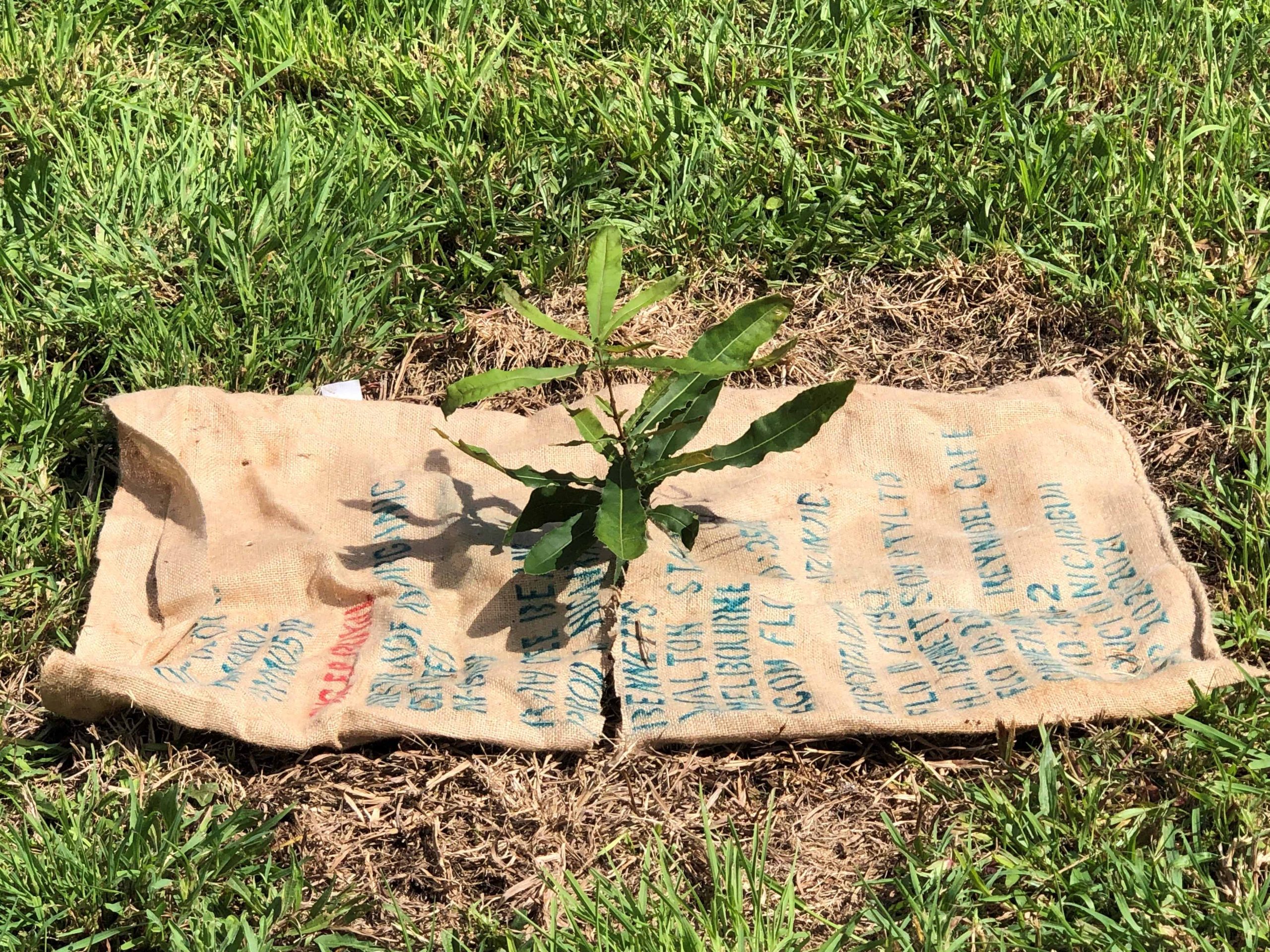
Towards the north-eastern end of her rural community title lot is a paddock that’s remained unutilised since the construction of her home in 2006. Not wanting to have it mowed indefinitely, Christobel Munson decided to transform it into a Bush Tucker ‘food forest’. This is how she went about it.
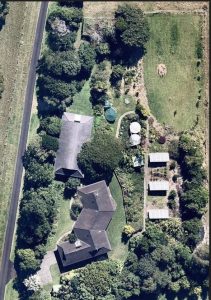
Before we bought the 46ha (113 acre) to establish a community for 12 households in 1994, it had primarily been a dairy farm owned by one family since white settlement. In those early years, settlers were required to remove every tree on the land before they could make it their home.
Today’s regulations are the opposite. For many years, on its denuded slopes, carefully following a Council-approved ‘environmental enhancement and management plan’ devised in 2002 by Rob Fleetwood and Mark Dunphy of Firewheel Rainforest Nursery, we – living on the community – planted at least 1,000 rainforest trees each year, until we’d planted 11,612. They’re now well-established.
To the north of my 7130m2 lot (1.76 acres), early on I established an old-fashioned orchard with many varieties of citrus, nuts, avocados, grapes, fruit of all kinds – both familiar and unknown, exotic and native.
To the lot’s west and southern boundaries, visual buffer zones of natives were planted out years back, for privacy. But downhill from the orchard was a north-east facing paddock of about 44m x 24m, lying fallow for 17 years. One day, after it was mowed, it occurred to me that it wasn’t sustainable, or sensible, to continue mowing it indefinitely.
I’m involved with the Bangalow Parklands team, which planted out a bush tucker garden in recent years. It sits next to the brilliant and inspired native planting created along Byron Creek by Bangalow Land and Rivercare. Seeing how well that bush tucker area was developing, I decided to create one on this vacant paddock.
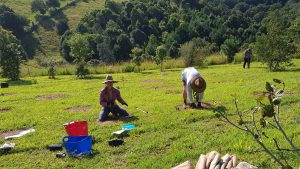
Before she left for yet another long-distance camping adventure around Australia, I asked Liz Franks, former president of Bangalow Land and Rivercare, to help with its design and species selection, taking into consideration the slope and aspect. Her species list included Plum Pine, Blue Lillypilly, Riberry, Red fruited Tamarind, Lemon Myrtle, Finger Limes, Davidson and Mullumbimby Plums (Davidsonia puriens and Davidsonia jerseyana), Peanut trees and Sandpaper figs. It needed enough plants to carefully cover the area, with some shelter trees for protection from strong winds, and to allow for mowing between rows during their early years.
Calling on another old friend and working buddy from the Land Use team of Zero Emissions Byron, Dave Rawlins, we fine-tuned the design to take into account the lot’s idiosyncrasies – such as the disposal area of my onsite waste-water treatment system in a corner of the paddock, plus plant availability. Trees can’t be planted in the disposal area, so were replaced by a selection of tough, colourful native flowers, such as flowering daisies. (I couldn’t resist adding a couple of dramatic Gymea lillies and a Little Penda.)
Dave also pointed me to a very useful page on the Firewheel website specifically listing appropriate Bush Tucker species, so yet more – such as Macadamia nuts – were added.
When planting out large areas, a major consideration is mulch. On a steep or remote slope, it can be challenging to bring in mulch, such as heavy long-lasting wood chip, because of the difficulty of getting it to site.
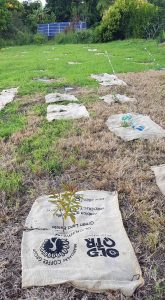
And it can get expensive. As a professional rainforest regenerator for more than 20 years, Dave recommended the use of used coffee sacks instead. As luck would have it, a neighbour runs a coffee business and was happy to provide scores of used sacks. Another friend, who had in the past worked on some of our community planting bees, now also runs a coffee import business, yielding still more useful sacks.
A date for planting was set. The 100+ plants were ordered from a native nursery in Mooball, then collected the day before and soaked overnight in Seasol and water (to help prevent transplant shock). The kikuyu-dominated paddock was mowed, roughly indicating a pathway, and designated planting spots were spot-sprayed. A happy crew of five dug holes with handy specialised tools Dave supplied, then planted the trees, added a handful of dynamic lifter fertiliser, and next arranged the coffee sacks – which had each been slit halfway through – around each plant. The sacks were then fixed to the ground with weed-matt pins. Each plant was thoroughly soaked, from our 111,000 litre rainwater tanks, conveniently located close by.
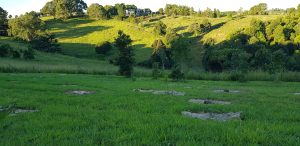
After only a few hours, the planting was complete. Now I’m looking forward to the time when the trees have reached canopy – probably in three years – and the paddock no longer needs to be mowed. That will mean less use of fossil fuel. By adding this selection of bush tucker plants to my garden, I’ll be encouraging more biodiversity to my immediate environment: more birds, more insects, more reptiles. Really looking forward to the new plants maturing, so I can include some other bush foods in my diet, such as the round (not cylindrical) finger limes that I haven’t tried before. Am watching this space, with interest.